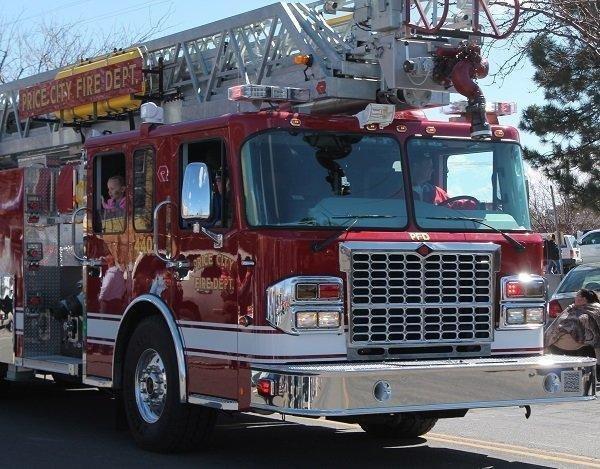Smoke filled the air in south Price June 17 as wind fueled the flames of a structure fire. At approximately 7 p.m., emergency crews were called to the location at 5200 South Highway 10 near Miller Creek.
When fire crews arrived on the scene, they found three storage sheds engulfed in flames and a fourth in danger. According to Price City Fire Chief Paul Bedont, the original fire most likely stemmed from a power line spark. A small shop nearby caught fire and because of contents stored inside the building, the fire quickly spread.
“Contents inside the shop made the situation worse,” Bedont explained. “There was a lot of equipment, diesel fuel and settling tanks that exploded inside the building. This, along with high winds and a severely damaged and energized power pole nearby, hampered our efforts dramatically.”
Once flames were extinguished, three storage sheds were destroyed and smoke continued to fill the air due to high winds.
Soon after the south Price incident, Bedont explained the dangers fire crews face when battling a garage or shop fire.
“Garage fires are one of the most hazardous fires we face,” he indicated. “People generally store flammables, fertilizers, pesticides, compressed gasses and a number of chemicals which can produce very toxic vapors when burned. The problem is, as firefighters, we are generally unaware of the contents of garages when we respond to fires.”
These type of fires are quite common. In fact, according to the US Fire Administration, there are 6,600 garage fires each year that result in 30 deaths, 400 injuries and $457 million in property loss nationwide. Of these fires, 93% occurred in garages attached to homes.
According to the fire administration, the leading cause of garage fires are electrical malfunctions. This can be due to shorts or damaged wires and overloaded electrical outlets.
Bedont cautions residents to be vigilant and follow a few tips on garage fire prevention, which includes the following:
- Store oil, gasoline, paints, propane and varnishes in a shed away from a home.
- Keep items that can burn on shelves and away from appliances.
- Plug only one charging appliance into an outlet.
- Do not use an extension cord when charging an appliance.
- Install a fire-rated door that is self-closing and self-latching from the garage into the house.
- Make sure the ceiling is made with 5/8 inch Type X gypsum board or equivalent if there is a living space above the garage.
- A wall with 1/2 inch gypsum board or equivalent should be used where walls attach the garage to the home.
- Make sure to have an attic hatch cover if there is attic access in the garage.
- Install a heat alarm and not smoke alarm inside the garage. The alarm will sound if temperatures rise too high.
To learn more about fire prevention, visit www.usfa.fema.gov.


